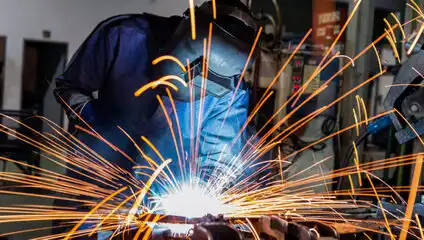Steel fabrication plays a pivotal role in shaping modern architecture, serving as both the backbone of structural integrity and a key element of aesthetic design. As architecture evolves to meet the demands of contemporary society, steel has emerged as a material of choice for architects and engineers alike. Its versatility, strength, and sustainability make it an essential component in constructing everything from towering skyscrapers to intricate bridges. This article explores the role of steel fabrication in modern architecture, highlighting its benefits and impact on the built environment.
1. Structural Strength and Durability
One of the most significant contributions of steel fabrication to modern architecture is the unparalleled strength it provides to structures. Steel is a highly durable material, capable of withstanding extreme forces such as high winds, seismic activity, and heavy loads. This strength allows architects to design buildings that reach unprecedented heights and span vast distances, making steel an ideal choice for constructing skyscrapers, bridges, and large-scale infrastructure projects.
In addition to its strength, steel’s durability ensures that buildings can withstand the test of time. Unlike other materials that may degrade or weaken over time, steel maintains its structural integrity for decades, reducing the need for frequent repairs or replacements. This longevity is especially important in urban environments, where buildings are expected to endure harsh weather conditions and constant use.
2. Versatility in Design

Steel fabrication offers architects and designers unparalleled versatility, allowing for the creation of complex and innovative structures that push the boundaries of traditional architecture. Steel can be fabricated into various shapes and sizes, enabling the construction of curved, angular, and asymmetrical forms that would be difficult or impossible to achieve with other materials.
This versatility is particularly evident in modern architectural landmarks, where steel is often used to create visually striking designs that capture the imagination. For example, the Sydney Opera House’s iconic roof structure, with its series of sail-like shells, would not have been possible without the use of steel. Similarly, the twisting forms of the Guggenheim Museum in Bilbao and the sleek lines of the Burj Khalifa in Dubai showcase the limitless design possibilities offered by steel fabrication.
3. Aesthetic Appeal
In addition to its structural benefits, steel also contributes to the aesthetic appeal of modern architecture. The sleek, clean lines of steel beams and columns complement the minimalist design trends popular in contemporary architecture. Steel can be left exposed as a design feature, adding an industrial, modern look to buildings. This aesthetic has become increasingly popular in urban environments, where steel-framed structures are celebrated for their raw, unfinished appearance.
Moreover, steel can be combined with other materials, such as glass, wood, and concrete, to create visually stunning contrasts and harmonious designs. The transparency of glass paired with the solidity of steel, for instance, results in a striking interplay of light and shadow, enhancing the overall visual impact of a building.

4. Sustainability and Environmental Impact
As sustainability becomes a growing concern in architecture, steel fabrication has emerged as a key player in creating eco-friendly buildings. Steel is a highly recyclable material, with most steel used in construction today being made from recycled scrap. This recyclability reduces the need for raw material extraction and minimizes the environmental impact of construction projects.
In addition to being recyclable, steel contributes to energy efficiency in buildings. Its strength allows for the creation of lightweight structures that require less material and energy to construct. Furthermore, steel-framed buildings can be designed with energy-saving features, such as natural ventilation and solar shading, to reduce the overall energy consumption of the structure.
Steel fabrication also enables the construction of prefabricated components, which can be assembled on-site with minimal waste. This prefabrication process not only reduces construction time but also decreases the environmental footprint of the building process by minimizing on-site waste and disruption.
5. Innovation and Future Trends
The role of steel fabrication in modern architecture is continually evolving, driven by advancements in technology and new approaches to design. Innovations such as 3D printing and computer-aided design (CAD) have opened up new possibilities for steel fabrication, allowing for greater precision and creativity in architectural projects.
One emerging trend is the use of steel in modular construction, where prefabricated steel modules are assembled to create entire buildings. This method offers numerous benefits, including reduced construction time, improved quality control, and the ability to easily modify or expand structures in the future.
Another exciting development is the integration of steel with smart technologies. Steel-framed buildings can be equipped with sensors and monitoring systems that provide real-time data on the building’s performance, such as energy usage, structural health, and environmental conditions. This data can be used to optimize building operations and ensure long-term sustainability.
Conclusion
Steel Fabrication in Lithonia, GA is an integral part of modern architecture, offering unmatched strength, versatility, and aesthetic appeal. Its role in shaping the skylines of cities around the world is undeniable, as steel continues to enable the construction of innovative and iconic structures. As the demand for sustainable and efficient building practices grows, steel will remain a key material in the architectural landscape, driving the future of design and construction. Whether it’s in the creation of towering skyscrapers or intricate bridges, steel fabrication will continue to play a crucial role in the evolution of modern architecture.
